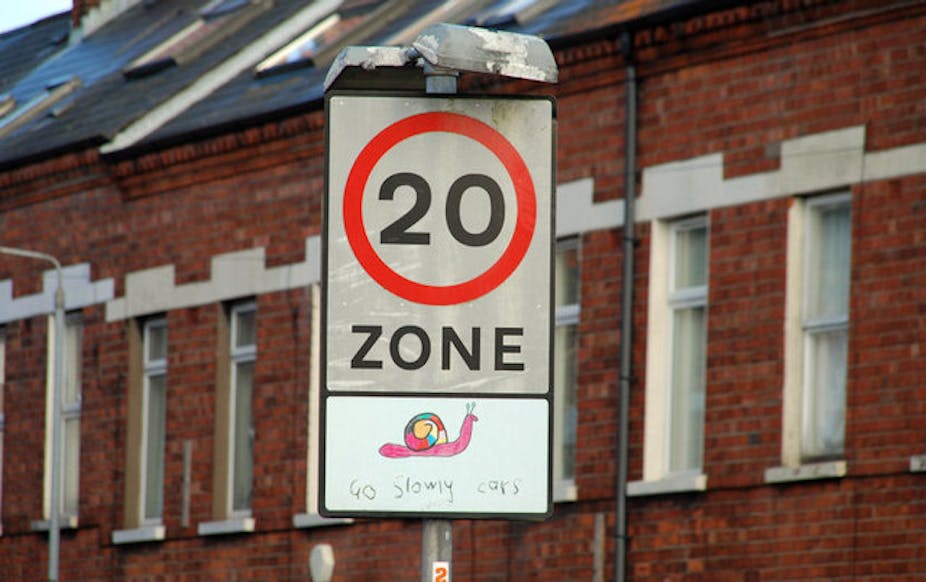In the UK today, there are sizeable inequalities in health – and sometimes that gap isn’t just about north versus south. In Stockton Tees in the north-east of England, for example, there’s a 15-year gap in life expectancy between the least and most deprived areas. In London, the gap between such areas is nearly 25 years; and there is a five-year gap between the 10 tube stops between Westminster and Canning Town on the Jubilee Line. Glasgow has an infamous 28-year gap in life expectancy across the city.
It’s clear that the problem isn’t just national but local. And the British Academy has just launched a collection of opinion pieces from leading social scientists with ideas on what councils could do to reduce these inequalities, based on the evidence. They come in the wake of Michael Marmot’s 2010 review into the scale of the problem in England, where people with a better education, a higher income, or a better occupation, experience better health and a longer life.
A US analysis of things that most influence health suggest our physical environment counts for about 10%, clincial care (for example hospital treatment) 20% and health behaviour such as smoking and diet accounted for 30%. But the biggest influence on our health was socioeconomic factors at 40% – these of course also influence health behaviour.
The government has suggested local authorities are best placed to influence these factors. But local authorities have limited powers and are also being subjected to large (up to 50%) budget cuts. So what can they still do?
Two of our ideas
Claire Bambra: tackle health-related worklessness
Reducing worklessness has had a high profile, but previous policies have failed because they’ve largely ignored the root cause – ill health.
There is a strong relationship between ill health and unemployment and one of the key drivers of health inequality is health-related worklessness. We know that being sick or disabled greatly reduces an individual’s employment prospects – the employment rates of people with a disability or chronic illness in the UK are around 40% compared to 70% for those with good health.
But being out of work also results in poorer health and health-related job loss is more likely to be experienced by those in lower social groups. There are also substantial geographical inequalities, with rates highest in the north and in the most deprived areas.
There are areas where improvements have come from looking at the issue in a different way. The County Durham Worklessness and Health programme, for example, which was commissioned by the NHS in partnership with the local authority, has been successful in addressing barriers to employment such as debt or housing among those in receipt of incapacity-related benefits by seeing health as the key issue. Over six months an evaluation showed the general and mental health of participants almost doubled and that the intervention was good value for money.
There’s clear potential for this health-first approach. And it could be an important way for clinical commissioning groups, work programme providers and local authorities to work in partnership.
Danny Dorling: replace 30mph zones with 20mph
When asked what single policy I would suggest to improve public health, I always reply “20mph” or, if I’m being a little more verbose: “20’s plenty”.
This normally elicits some surprise. The person I’m speaking to usually expects me to suggest reducing poverty by reducing unnecessary privileges for the rich, narrowing economic inequalities, or improving health services or education; not simply slowing cars down. All these things are very laudable, but if you want to do just one thing, then the thing you can actually do, the thing that makes a difference that you can feel, see and measure straight away, is to stick a sign that says 20mph on a circular piece of plastic over the 30mph signs where you live.
Implementing 20mph speed limits (where 30mph ones have been) could be one of the cheapest and most effective methods for improving public health today. Easily enacted at the local level, this very literal slow-down would reduce the risk of pedestrian – and especially child – fatalities and bring about wider benefits such as less pollution and stronger communities.
The proportion of pedestrian road crash deaths is steadily increasing, and it tends to be in the poorer parts of cities that people are most at risk of being hurt or killed by cars.
Besides reducing death and injuries, a widespread slow-down of fast cars would reduce the indirect harm that comes from them, including that affecting ill health suffered by the family and friends of those who are victims of road crashes.
20mph speed limits have now been implemented in more than 100 local authorities already (including the City of London just last year). Success stories include Burnley in Lancashire where a pilot scheme to introduce 20mph from February 2011 to April 2012 resulted in the overall figures falling from 46 casualties a year, with six deaths and serious injuries, to 25 casualties a year with only two deaths and serious injuries.
At almost the same time in Newcastle upon Tyne it was recently reported: “The number of car-related accidents on Newcastle’s residential streets has dropped by more than half in some areas of the city following the council’s introduction of 20mph speed limits.”
Therefore, I would urge other councils to follow their example. Changing the speed limits in residential areas to help significantly improve public health.

